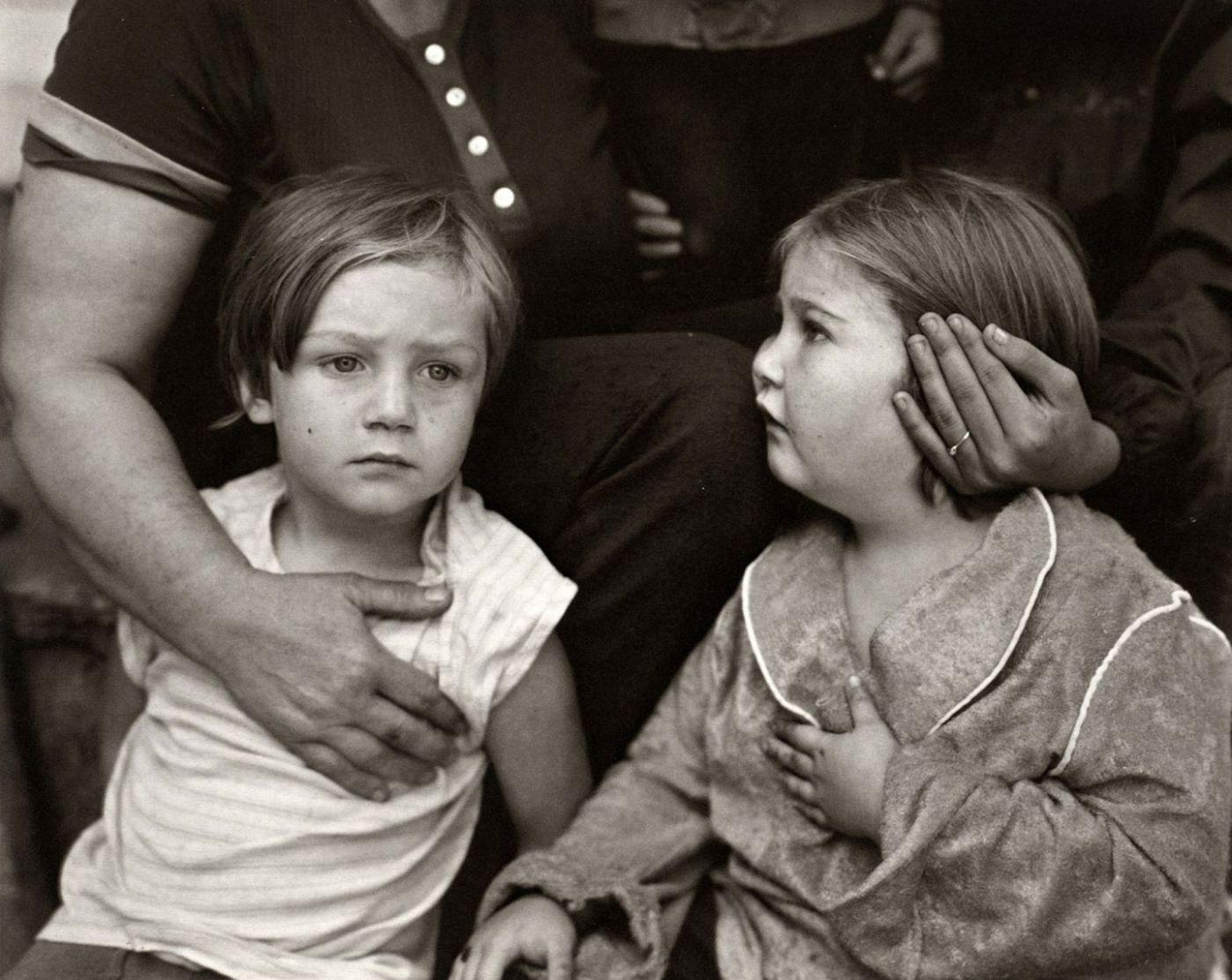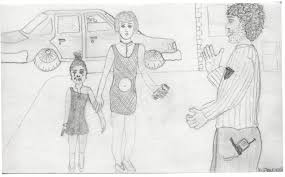When thinking about portraits as well as considering who you are going to photograph (Project 2 – The aware) you also need to consider where. Just as dividing up who you are going to photograph you can also divide up the place into types:
- Inside – examples of these are the June Street images by Parr and Daniel Meadows, Daniel Meadows 2 and the Mother series by Paul Graham
- Outside – many of the images of Eleanor taken by Harry Callahan
Both of the places can be further subdivided into:
- A natural environment – the images by Sian Davey in Martha and Looking for Alice.
- A studio, which can be further divided into:
- Formal – an example of this is the work Gone Astray by Clare Strand where people are photographed against a backdrop of a Victorian type frame
- Informal – the work of Irving Penn in Worlds in a Small Room could be considered as a relatively informal studio, in that it was portable, although it became more fixed as time went on. A more informal studio was shown in Daniel Meadows Omnibus Project where he travelled around with a converted bus.
Interestingly there is a recent series of work by Sandro Miller shown on Lenscratch I am Papua New Guinea available at:
http://lenscratch.com/2019/10/sandro-miller-i-am-papua-new-guinea/
In this Miller went to Papua New Guinea on three occasions, set up a studio and offered the chance for people to come and have the photographs taken in all their finery. The images, although mainly in colour, are strongly redolent of Penn’s images of a similar area of the world. Like Penn, he noted that many of these people have had little or no previous awareness of a camera. However, Miller’s images do give more of a feeling of the person rather than just the exotica and he identifies the people both by name and tribe, rather than showing a group of images that are exciting but impersonal.
An example of photographs of people taken mainly outside, in a ‘natural’ environment, is the work of Andrea Modica – Treadwell. Treadwell is ‘a place in the imagination…. a fiction about a little girl growing up’ (Modica and Proulx, 1996). In the initial essay by E.Annie Proulx, Modica describes how she ‘entered into an intimacy with the situation of place’ and took a series of pictures, not all in the ‘real’ Treadwell that tell the life of a girl growing up in a series of decayed farmhouses and crowded places. The places are allegorical, essential to the meaning, often ghostly or reminiscent of death. Without the landscape the story would not be present. Without the children there would be nothing but depression and misery. Both together give a possibility of hope.
References:
Drew, R., Chandler, D., Eskildsen, U., Jeffrey, I., Mullen, C. and Strand, C. (2009). Clare Strand : a Photoworks Monograph. Brighton: Photoworks ; Göttingen, Germany.
Graham, P. (2019). Mother. S.L.: Mack.
http://lenscratch.com/author/aline-smithson (2019). Sandro Miller: I am Papua New Guinea. [online] LENSCRATCH. Available at: http://lenscratch.com/2019/10/sandro-miller-i-am-papua-new-guinea/ [Accessed 11 Nov. 2019].
Modica, A. and Proulx, A. (1996). Treadwell. San Francisco: Chronicle Books.
Penn, I. (1974). Worlds in a Small Room. London: Secker & Warburg.
Siân Davey (2015). Looking for Alice. Great Britain: Trolley Ltd.
Siân Davey (2019). Martha. Hertfordshire: Trolleybooks.











